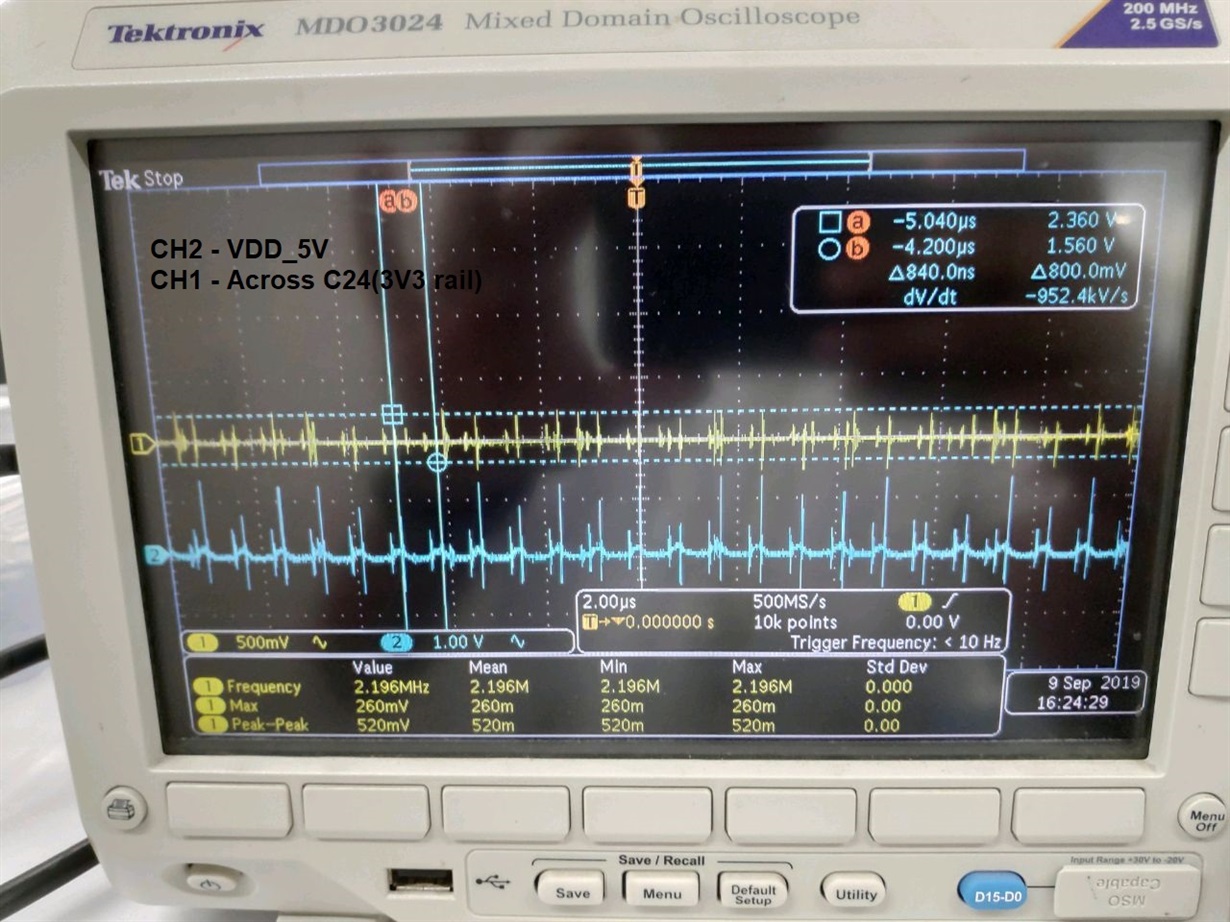Hi,
I am using TPS40305DRCR switcher IC to generate 3.3V from 5V input. It is designed to generate 3.3V with 9A load. The switching frequency is 1.2 MHz. When I connect an external load of 1A or more, I am receiving ripples at input of the switcher at 1.2 MHz frequency and as I increase the load, the ripples' amplitude increases and ripples at same frequency are received at output side. Can you please tell me why the ripples are reflected back on input at switcher's frequency? Please provide the solution and root cause for this problem.
I have attached schematic snapshot and waveform for your reference.
Thanks in advance!
Sahil Nayak


